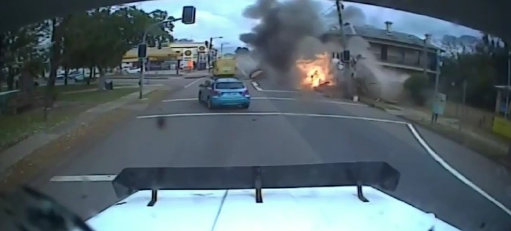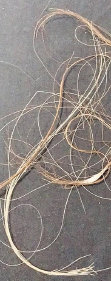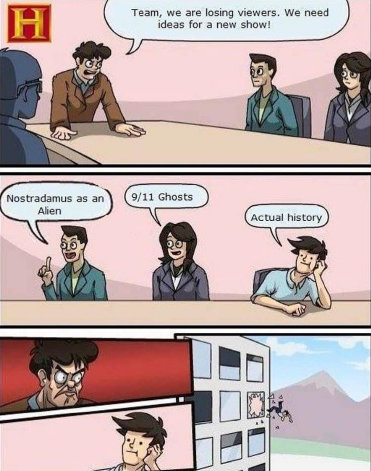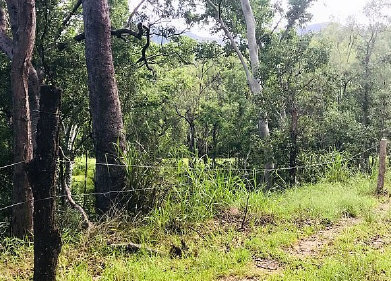The Naked Yowie Project


HOME
CONTACT
YOWIE, YETI, BIGFOOT, CRYPTOZOOLOGY, RESEARCH, POP CULTURE, FOLKLORE, ARCHAEOLOGY, PSYCHOLOGY
Yowie Year in Review: 2019
Part I: January to March
by Ed S.
21 December, 2019
Yowie Year in Review: 2019
Part I: January to March
Part V: Possible Explanations
JANUARY
Skeptical author (and convicted fraudster),
Brian Dunning, began 2019 by scrutinizing reputed audio recordings of
Bigfoot vocalizations. Some of the sounds attributed to Bigfoot were unusual sounds made by mundane animals, others
are most likely the result of human fabrication, while others remain truly unknown. However, "unknown" does not necessarily
mean Bigfoot made them. "Unknown" means that the sound is ambiguous, the source is unknown, and more information is needed to
form a conclusion. "The probable explanation is always a better bet than the improbable one," Dunning opines. "In fact it's no more
likely to be Bigfoot than it is the psychic projection of an alien living inside the hollow Earth, which is equally improbable."
The
Lost Ethnographies: Methodological Insights From Projects That Never Were was published on January 4th and featured a chapter entitled,
"
Losing Bigfoot." Sociologists Jamie Lewis and Andrew Bartlett delve into the modern practice of "Bigfooting" (i.e. searching for
proof of Bigfoot's existence) as it is portrayed on television. While much can be gleaned directly from "reality" shows
such as
Finding Bigfoot and
Chasing Bigfoot: the quest for truth the authors wonder what is missed by not actually being there. "(H)ow
do you learn to 'experience' Bigfoot, to 'see' traces of Bigfoot?" Unfortunately, the whole chapter is not yet available for free.
ESSENTIAL READING.
Independent researcher and author,
Sharon Hill, observed how journalists "delve into weird websites or social
media to provide local color and clicks" when news days are low on exciting content. That is certainly what happened in 2020 with
numerous examples of Yowie stories having been plucked directly from social media sites like Facebook, and YouTube.
Hill also examines
witness reliability:
Dozens, probably hundreds, of viral videos and photos that claim to show big cats that are actually domestic cats or large dogs. If we can’t readily recognize the most common animals we interact with – dogs and cats – how can cryptozoologists say that natives and experienced hunters “know” that what they saw wasn’t a typical animal but instead was Bigfoot or a mystery animal. Observation is fallible and rule #1 of investigating strange events is to understand that witness claims are interpretations, not facts.
Many witnesses confidently declare, "I know what I saw" but in the absence of objective supporting evidence how can they, or we, be
sure? When it comes to Yowie/Bigfoot, some individual personal reports are very compelling yet the objective supporting
evidence is always completely lacking, ambiguous, or actually indicative of something else. In that regard, the Yowie Year 2019
played out no differently than any other year.
In the United States, Davie County Animal Services was forced to action after
receiving
multiple reports of a Bigfoot with glowing red eyes in the North Carolina town of Mocksville. Turns out that the callers
weren't imagining it -- a wooden statue of Bigfoot with red marbles for eyes to reflect approaching headlights was left in the woods.
It is tempting to simply laugh off and forget such reports yet it should be noted that photographs of
a painted Bigfoot cut-out were
presented as Yowie evidence in some 2019 articles and considered genuine (or at least potentially so) in some yowie-research
groups. Fakes can and do influence how people perceive things.
The Yowie Year began literally with an almighty bang on January
25 when a unusual story, which had been simmering away on Facebook, was suddenly picked up by mainstream media and promptly went "viral"
causing a brief global sensation. An anonymous truck driver claimed he was forced to slam on his breaks to avoid hitting
a massive Yowie around 10 ft in height at Witheren in the Gold Coast hinterlands. Surprised, the giant creature thrust out
its arm as a fend creating a huge thump that rattled the length of the truck before disappearing in the thick scrub
over the side of the road. After years of search were amateur researchers finally closing in on the Yowie?
Firstly, just how popular sensational stories about man-like beasts are around the
world and just how quickly such "news" spread. The media's and the public's attention to the subject also faded (or moved
on) just as quickly only to briefly flare again later with a new sensation at the end of April. It is interesting to note how amateur
investigators seek to
contribute to the hysteria rather than dispel it.
Secondly, it demonstrated just how
poor amateur investigation is
into such phenomena. Neither potential fakery nor the unreliability of witness reports presented the slightest concern for the investigator
who declared that he and his team "believe on the facts we are presented with." That is, they wouldn't have any idea as to whether the
story was fabricated or not. Details which should have been checked and/or verified weren't, DNA which could have potentially
been collected wasn't, and no independent specialists were consulted by the research team that investigated the case. Placing
motion-sensitive cameras in the bush may sound promising but has yet to provide any positive results.
If the Yowie is actually
a real but somehow-uncatalogued biological species then a golden opportunity for discovery went begging in Witheren.
Over the
Australia Day long weekend History Channel screened an Australian edition of
Ancient Aliens showing the discovery of Australia's own
version of Stonehenge, that ancient Egyptians once explored the continent, and how Indigenous art was evidence of ancient alien
visitation. That prompted several actual archaeologists and egyptologists to come forward in order to correct the record.
Yowieocalypse will
seek to examine the Yowie's links to pseudoarchaeological claims in greater detail...
_________________________
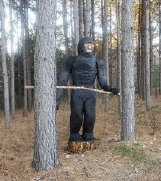
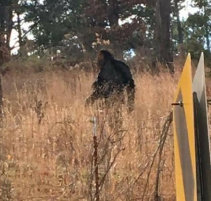
FEBRUARY
The Gold Coast incident then seemed to trigger the memory of a North Queensland woman, again anonymous, who suddenly recalled
having been
thrown off Red Hill in Woree by a Yowie -- 30 years previously! Corroboration of her account was not sought.
Surprisingly,
it was the newsprint media which sought a knowledgeable outside opinion in the case of the recent Witheren Yowie
encounter --
Shaun Davies, language and cultural researcher at the Yugambeh Museum, Beenleigh, Qld. Interestingly, Davies suggested
that the popular portrayal of the Yowie seemed to be a mix of two different figures from the local indigenous
lore. A recent journal article entitled, "
Indigenous Beliefs About Little People" may shed further light on the matter.
In the
U.S., the relief of finding 3-year-old
Casey Hathaway alive after being lost for 3 days in Craven County, North Carolina, gave
way to online conspiracy theories about his miraculous survival. After it was reported that Casey told his mother that he was befriended
by a bear, Bigfoot-enthusiasts speculated it was actually a Bigfoot that came to his rescue. Contrary to fringe opinion, Casey was
not found "in perfect health" but was deduced to be showing signs of long exposure by the attending emergency medical
personnel on site. No Bigfoot researchers were involved in the search for Casey.
Queensland
Yowie-researcher, Dave Taylor, featured
in
That's Life! -- an Australian reality-based entertainment and lifestyle magazine. Later that month, deep in the bush on what remained
of a damaged barbed-wire fence, Taylor reportedly collected some
strands of foul-smelling hair to be sent away for DNA testing. Was
the Yowie on the verge of discovery again? No results were forthcoming. Meanwhile, on a vegetated coral cay located at the northern
tip of the Great Barrier Reef, the
Bramble Cay melomys became the first extinction of a mammal species due to anthropogenic climate
change.
_________________________
MARCH
Rodney Johnson, 31, who in 2017 had stolen a truck and led police on a 100km pursuit across the NSW Hunter region and ended
in a fiery explosion on Main Street, Singleton, was sentenced for at least six years in jail. It was reported that
Johnson believed he saw a “black panther” and “three yowies” on the day of the crash, believing people “were trying to get” him. Final court submissions also revealed that Johnson, a diagnosed schizophrenic, had also stopped taking his medication months before the incident.
It is unknown just how much or how little of a role mental health plays in reported Yowie sightings.
In “
Hunting Dinosaurs in Central
Africa”, Edward Guimont examines how the persistent Euro-American belief in the existence of dinosaurs in Africa—often without evidence—always
served a colonial purpose.
The
Australian Wildlife Conservancy was forced to retract previously published records of the recently rediscovered night parrot after
finding that feathers, eggs, and recordings used as evidence of the parrot had been faked. Professor Penny Olsen from the Australian
National University said the falsified research would harm the AWC's credibility and future fundraising efforts. The accused
amateur researcher, John Young, denied any wrongdoing.
_________________________
